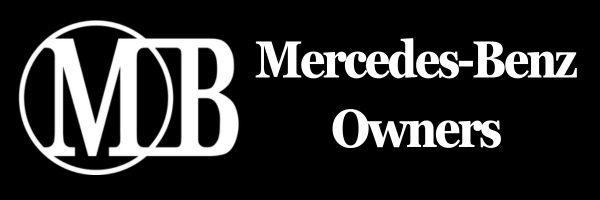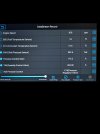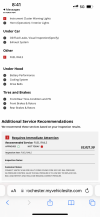clarknova
New Member
- Joined
- Oct 15, 2021
- Messages
- 7
- Reaction score
- 0
- Your Mercedes
- 2007 GL 320 CDI X164, 1985 300D W124
2007 GL 320 CDI
~295,000 km
Recently my check engine light has been coming on, at which point the car loses power. It feels to me like there is no turbo boost, like the wastegate is being held open. I guess it's a limp mode of sorts. This has happened dozens or maybe a hundred times in the past month, and always while coasting with my foot off the accelerator. It's particularly common and pesky while descending a valley, because then I have to ascend the other side with insufficient power unless I can quickly clear the code, at which point full power is restored. I have noticed no other symptoms than the CEL and the lack of power that follows.
The error code that accompanies these incidents is "2020-1: rail pressure monitoring via pressure control valve: The rail pressure is too high for the closed pressure regulator valve." I have found very little information about this error on the web or through Identifix.
I did find the attached document GF07.10-P-1014OHG that states that the CDI control unit is supposed to shut off fuel to the injectors and reduce rail pressure through the quantity control valve (Y94) and pressure regulator valve (Y74). The wording of the error suggests to me that the controller believes the PRV to be closed, and that the rail pressure is higher than expected with the PRV closed.
I connected the iCarsoft and started monitoring rail pressure, PRV and QCV while crossing the valley multiple times. Unfortunately the CEL did not light once during all this, so I will have to continue to investigate. However I did see some values that didn't make sense to me.
Rail pressure. At idle, this typically flatlined around 260 bar IIRC and increase with throttle to a maximum of ~1350 bar while climbing the hill. While descending the hill and coasting, rail pressure was usually in the 1100 - 1300 bar range, which I did not expect. As soon as I got back on the accelerator it would drop to expected values relative to load.
PRV. Typically around 18% at idle and higher while coasting down hill. Values fluctuated during normal driving. I don't think I ever saw it drop below about 18%.
QCV. Around 32% at idle with some change during driving. No obvious correlation with engine speed or load.
Although I haven't found anything that points firmly toward any specific diagnosis, everything I've read and seen seems to implicate a problem with the PRV, QCV, rail pressure sensor, fuel filter, injector pump or injectors. Unfortunately it's a long list and only the fuel filter and pressure sensor are cheap enough to try without a more serious investigation.
I will continue to monitor the PRV, QCV And pressure values and hope to catch them when the CEL comes on again. I'd like to read any insights or suggestions from others on the forum as to what else to check for.
~295,000 km
Recently my check engine light has been coming on, at which point the car loses power. It feels to me like there is no turbo boost, like the wastegate is being held open. I guess it's a limp mode of sorts. This has happened dozens or maybe a hundred times in the past month, and always while coasting with my foot off the accelerator. It's particularly common and pesky while descending a valley, because then I have to ascend the other side with insufficient power unless I can quickly clear the code, at which point full power is restored. I have noticed no other symptoms than the CEL and the lack of power that follows.
The error code that accompanies these incidents is "2020-1: rail pressure monitoring via pressure control valve: The rail pressure is too high for the closed pressure regulator valve." I have found very little information about this error on the web or through Identifix.
I did find the attached document GF07.10-P-1014OHG that states that the CDI control unit is supposed to shut off fuel to the injectors and reduce rail pressure through the quantity control valve (Y94) and pressure regulator valve (Y74). The wording of the error suggests to me that the controller believes the PRV to be closed, and that the rail pressure is higher than expected with the PRV closed.
I connected the iCarsoft and started monitoring rail pressure, PRV and QCV while crossing the valley multiple times. Unfortunately the CEL did not light once during all this, so I will have to continue to investigate. However I did see some values that didn't make sense to me.
Rail pressure. At idle, this typically flatlined around 260 bar IIRC and increase with throttle to a maximum of ~1350 bar while climbing the hill. While descending the hill and coasting, rail pressure was usually in the 1100 - 1300 bar range, which I did not expect. As soon as I got back on the accelerator it would drop to expected values relative to load.
PRV. Typically around 18% at idle and higher while coasting down hill. Values fluctuated during normal driving. I don't think I ever saw it drop below about 18%.
QCV. Around 32% at idle with some change during driving. No obvious correlation with engine speed or load.
Although I haven't found anything that points firmly toward any specific diagnosis, everything I've read and seen seems to implicate a problem with the PRV, QCV, rail pressure sensor, fuel filter, injector pump or injectors. Unfortunately it's a long list and only the fuel filter and pressure sensor are cheap enough to try without a more serious investigation.
I will continue to monitor the PRV, QCV And pressure values and hope to catch them when the CEL comes on again. I'd like to read any insights or suggestions from others on the forum as to what else to check for.




